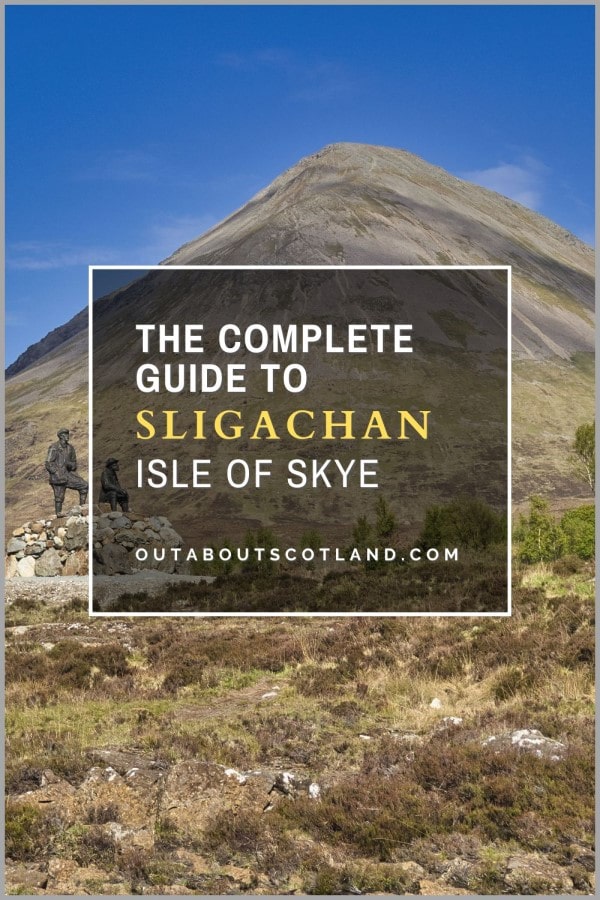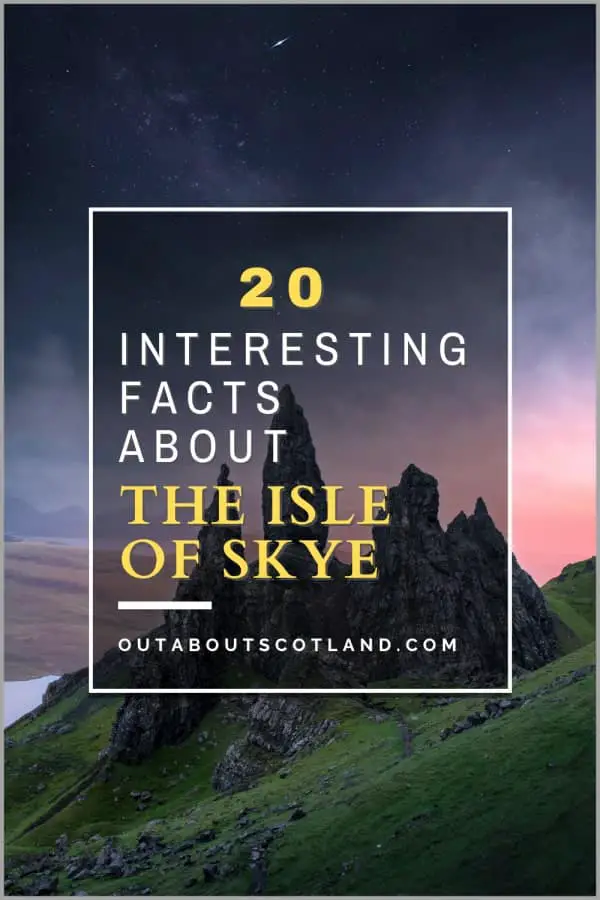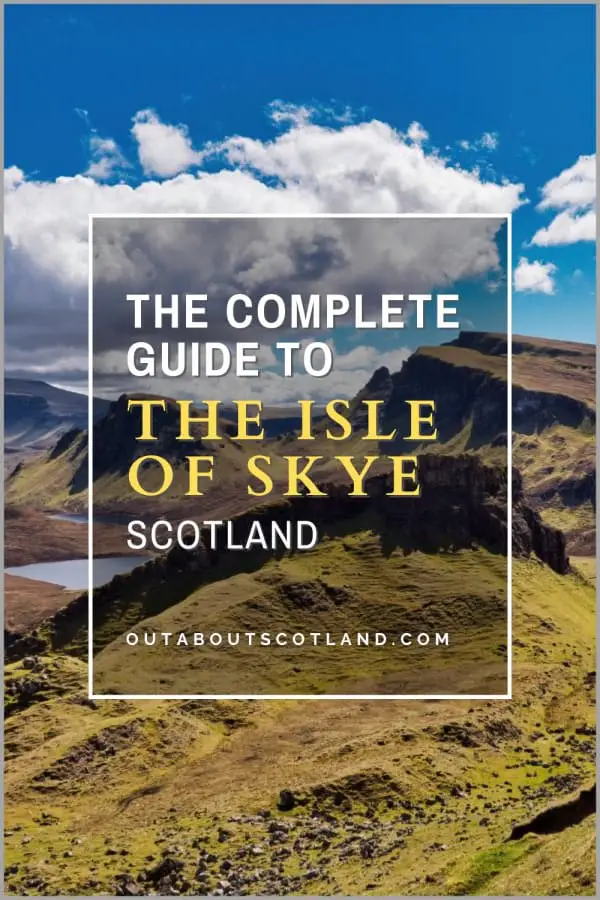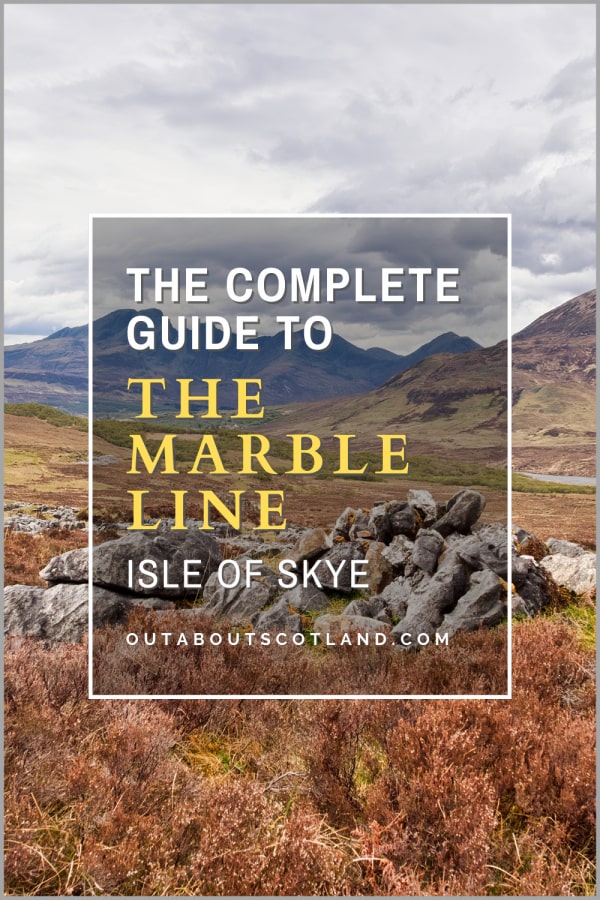The Isle of Skye is one of Scotland’s biggest tourism success stories, boosting the local economy by over £210 million each year and supporting almost 3,000 full-time jobs. But why is it such a popular place? The answer lies in its diverse range of attractions, which offer visitors everything from all-day mountain hikes to afternoon walks around castles and forests.
In this article, you’ll discover a collection of the best things to do on the Isle of Skye for families, along with a few suggestions for off-the-beaten-path attractions.
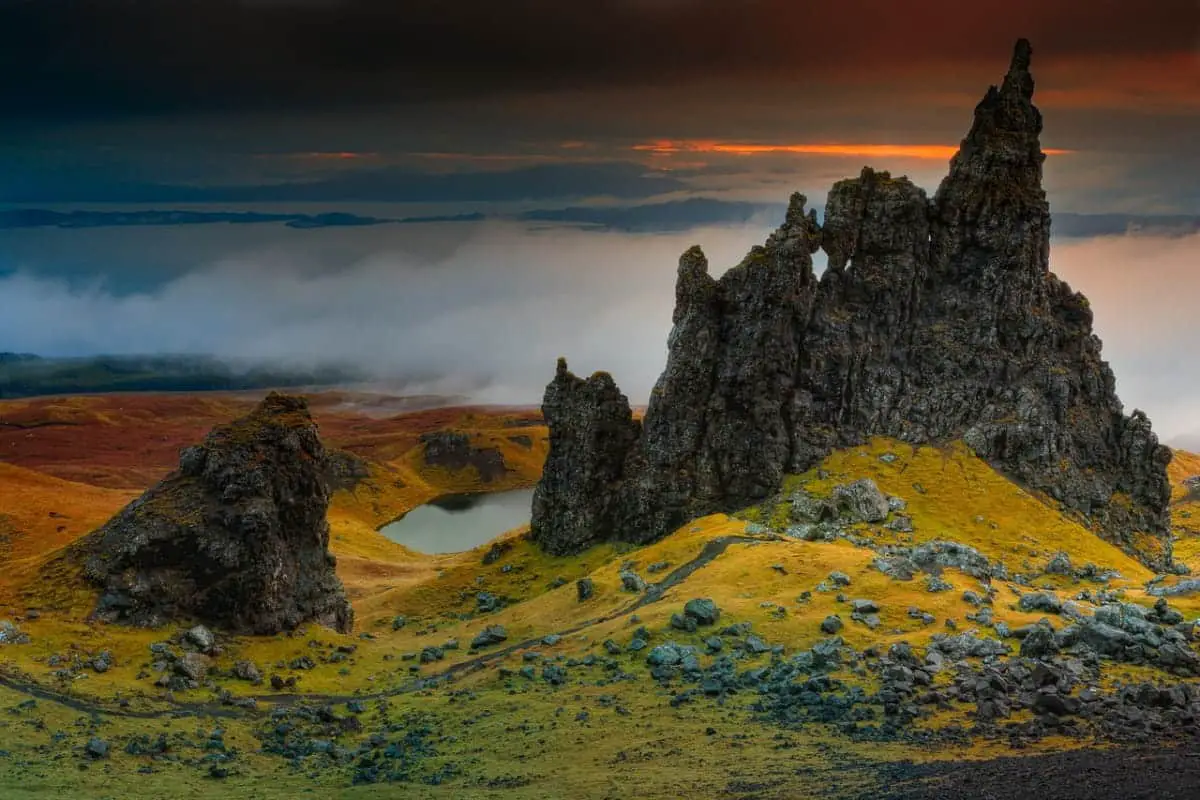
About the Isle of Skye
The Isle of Skye, alongside Edinburgh and the Highlands, always features heavily in most tourists”must’-do’ lists of places to visit in Scotland. To be honest, it’s not really surprising, as this island on the northwest coast is one of, if not the, most beautiful places in Europe (and, dare I say it, the world?).
The island’s popularity has as much to do with its ease of access as its beauty, as it’s the only large Scottish island that’s connected to the mainland by a bridge (Kyle of Lochalsh to Kyleakin) as well as a regular ferry service (Glenelg to Kylerhea), which is the last manually operated turntable ferry in the world.
It’s a big island too, at 660 square miles, yet it has a population of just 10,000, though this number explodes with tourists who arrive by the coachload day in and day out.
Currently, Skye attracts over 600,000 sightseers annually, and this number is expected to steadily ramp up in the coming years due to its natural attractions that are constantly shared on social media. Anyone who’s already visited will be well aware of attractions like the dramatic Cuillin mountains, the enigmatic Fairy Glen and Fairy Pools, and the jaw-dropping Loch Coruisk, but there are many more places to visit than those tourist hotspots.
I’ve been lucky enough to have visited Skye on several occasions, and in my opinion, every corner of the island has something to offer visitors. Whether it’s absorbing the history of Armadale and Dunvegan castles, tasting a wee dram at the Talisker and Torabhaig distilleries, or walking around the dramatic coastlines of the Uig and Sleat peninsulas, Skye has you covered when it comes to tourist attractions.
In this article, I’ll suggest some family-friendly activities on the Isle of Skye as well as a few spots that the tour buses that frequently congest the island’s roads rarely visit.
Armadale Castle
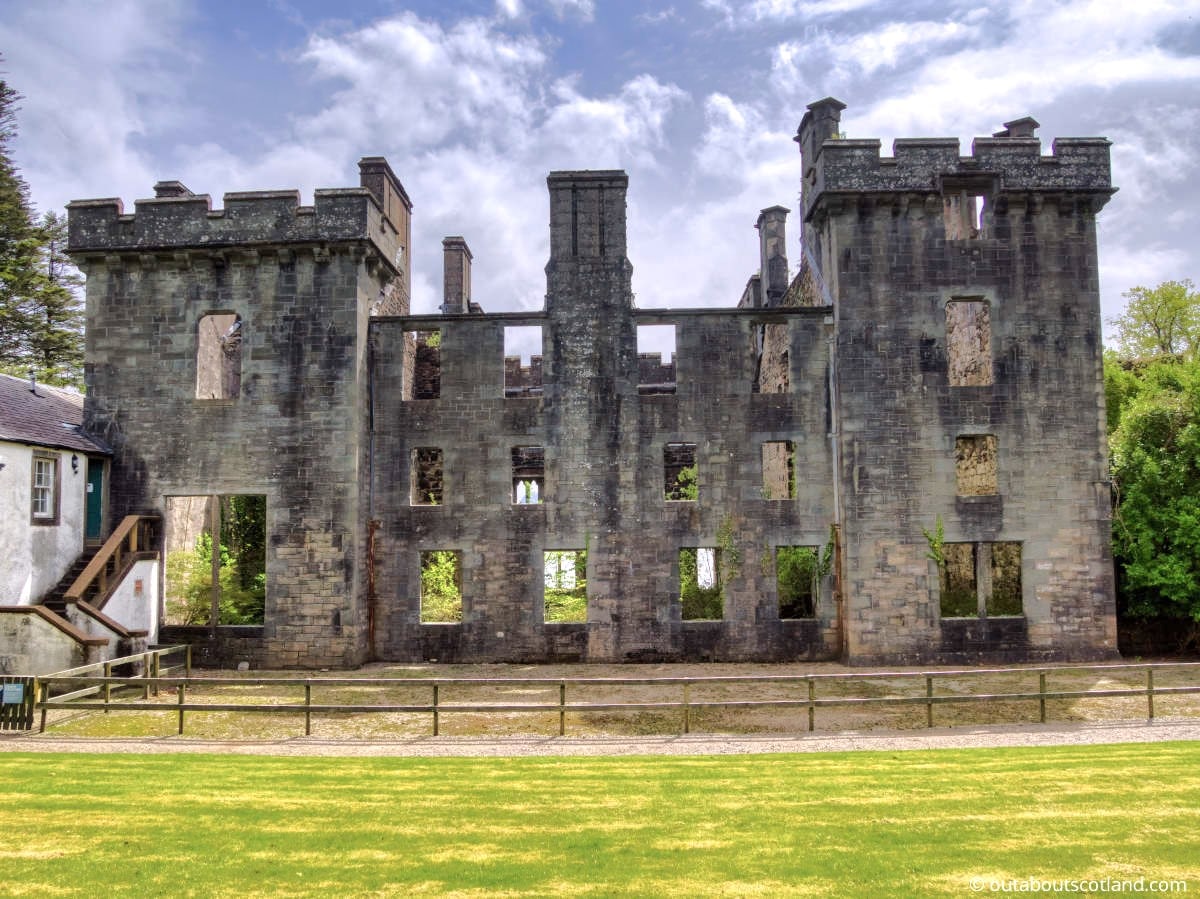
Out About Scotland Complete Guide to Armadale Castle
There are several castles on Skye, but many of them are nothing more than the remains of ancient walls and piles of collapsed stones. This one at Armadale is slightly different, as although it’s in ruin, it’s actually quite modern, having been built in 1815 for the powerful MacDonald clan.
The ‘castle’ isn’t really a castle at all and was, in reality, built as a grand mansion house, though it’s now in a rather sad state after being abandoned in 1925. As interesting as the old building is, by far the biggest and best feature has to be the Armadale Castle gardens, which include woodlands, manicured lawns, and stunning flowerbeds, along with another 20,000 acres in the rest of the estate.
Admittedly, you can’t explore all of it as much of the land is used as a working farm, but there are still more than enough things to see and do to keep families occupied for a full afternoon.
From the entrance and the excellent Stables bistro, visitors have a choice of visiting a children’s play park, walking around landscaped gardens and an arboretum, going on a long walk through woodlands to the top of a hill with a stunning viewpoint, and learning about the history of Skye and Clan MacDonald in the estate’s very own museum.
The museum, in particular, is worth the price of admission on its own, and as it’s located entirely indoors, it’s easily one of the best things to do on Skye in the rain. However, if it’s a dry day, I highly recommend the walking trail that follows the Armadale coastline before veering north to the Cnoc Armadale hilltop, where there are red deer roaming the edges of woodland and golden eagles soaring overhead.
From the top of the hill, you can see across Skye to the Cuillin Ridge in one direction and the Knoydart peninsula in the other, and it’s probably the best way to appreciate how pretty the Sleat peninsula is, although there’s another suggestion to explore an underrated part of Skye coming up next.
Boreraig Clearance Village
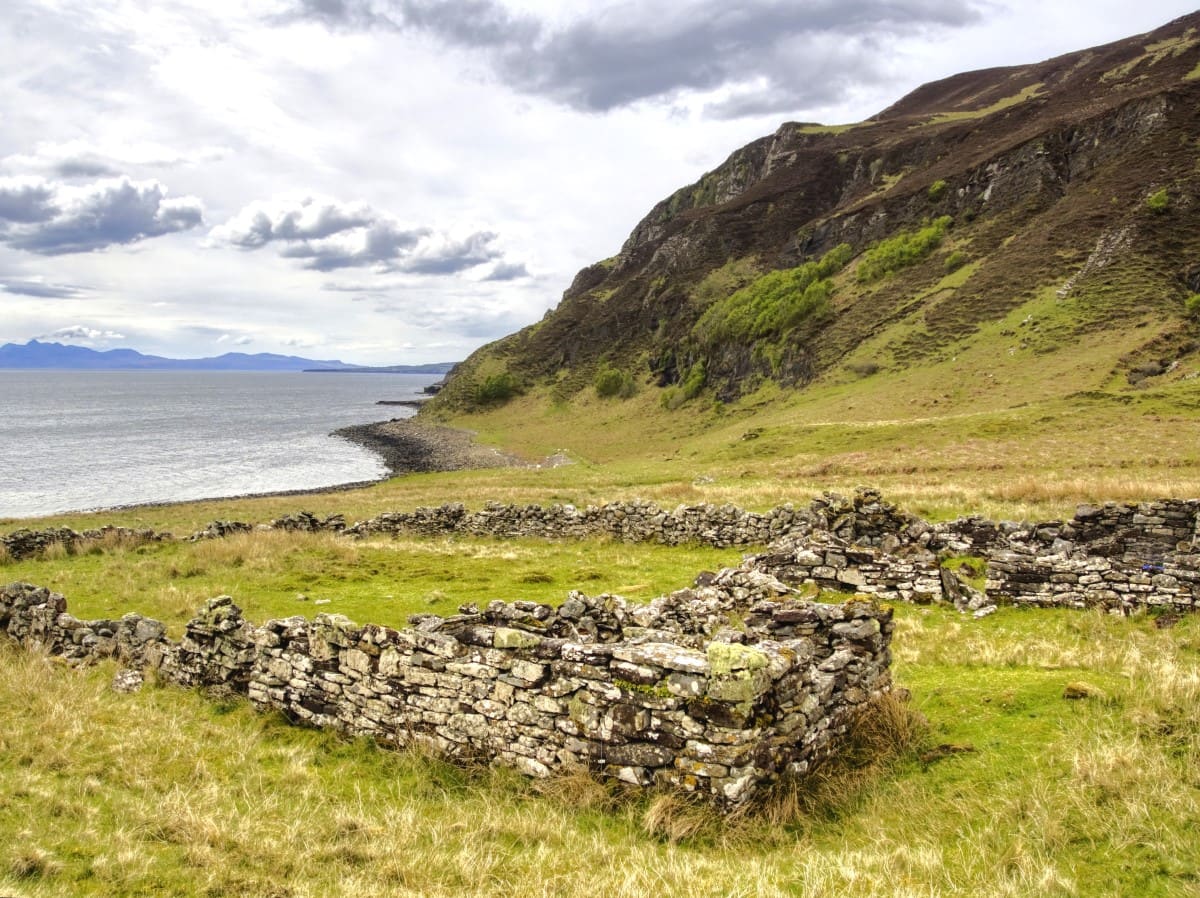
Out About Scotland Complete Guide to Boreraig Clearance Village
If you want to visit Skye but don’t fancy clambering your way through massive crowds of camera-wielding tourists, you might like to give the area south of the Red Cuillin mountains a look. This part of Skye is easy to get to due to its location near the Skye Bridge (it’s just 15 minutes from the bridge to Broadford), but it sees few tourists due to the fact that coaches have to race past it on their way to the Fairy Pools and the Old Man of Storr.
That means intrepid visitors can explore the area in relative peace and quiet—something that’s unheard of elsewhere in Skye.
Boreraig Clearance Village lies five miles south of Broadford, where it overlooks Loch Eishort and the Sleat Peninsula at the bottom of a sloping grass plain that is uninhabited in all directions for miles around, other than a few cows and lots of sheep.
Getting to Boreraig is a bit of a challenge as there are no roads to it and the walking trails are blink-and-you’ll-miss-them narrow, but the effort required to get to the old village is worth every puff and wheeze, purely because the views once you get there are utterly breathtaking.
If you’re not aware of clearance villages, they’re basically the remains of houses where people were forcibly evicted after the failure of the Jacobite uprising of 1745.
After the doomed Battle of Culloden the government retaliated against the Jacobite strongholds in the Highlands and Islands, and hundreds of thousands of tenant farmers were forced to leave their homes—hence the reason why so many Scots emigrated to America.
What remains at places like Boreraig are the shells of family homes that give a glimpse into the ancient Highland way of life. It’s a haunting place but very scenic, and visiting it is a wonderful way to explore one of the most underappreciated regions of Skye.
The Fairy Glen
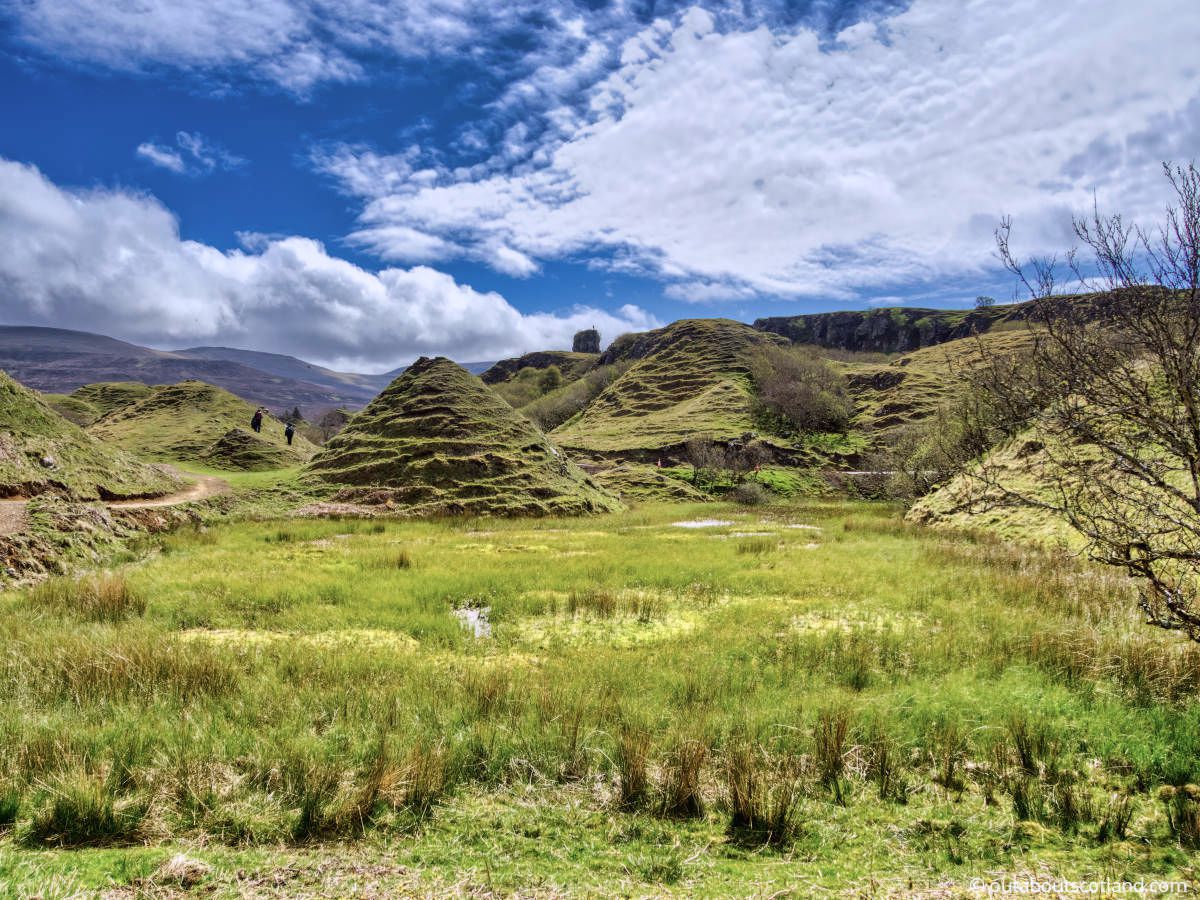
Out About Scotland Complete Guide to the Fairy Glen
The Fairy Glen is a picturesque landscape on the northern end of Skye, more or less in between the Trotternish ridge and the village of Uig (best known for its ferry links to the Isles of Uist and Harris). The glen is a cluster of conical hills surrounded by zigzagging steps in the middle of farmland with mountains on all sides.
The idea that fairies constructed these strange hills as a portal to another world has grown out of the fact that it is a truly surreal sight. The truth is slightly more mundane, though, as these landforms are actually the result of an ancient landslide, much like the devastatingly beautiful Quiraing (see further down this page).
The steps, meanwhile, were created by weather erosion on the different layers of sediment, and the photogenic fairy rings (stone circles on the ground) were placed there by tourists, so there’s scant evidence of fairies at work anywhere on the site. That shouldn’t detract from visiting the Fairy Glen, though, as whatever its origins, it’s a stunning location and easily one of the most unusual things to do on the Isle of Skye.
Visitors will find a narrow gravel footpath winding its way between the hills, which allows access to one half while the other can be accessed from the road leading away from the car park.
It shouldn’t take much more than an hour to fully explore this natural curiosity, but combined with a walk through Quiraing, you’ll be rewarded with two of the prettiest landscapes in Scotland in the space of a single day.
The Fairy Pools
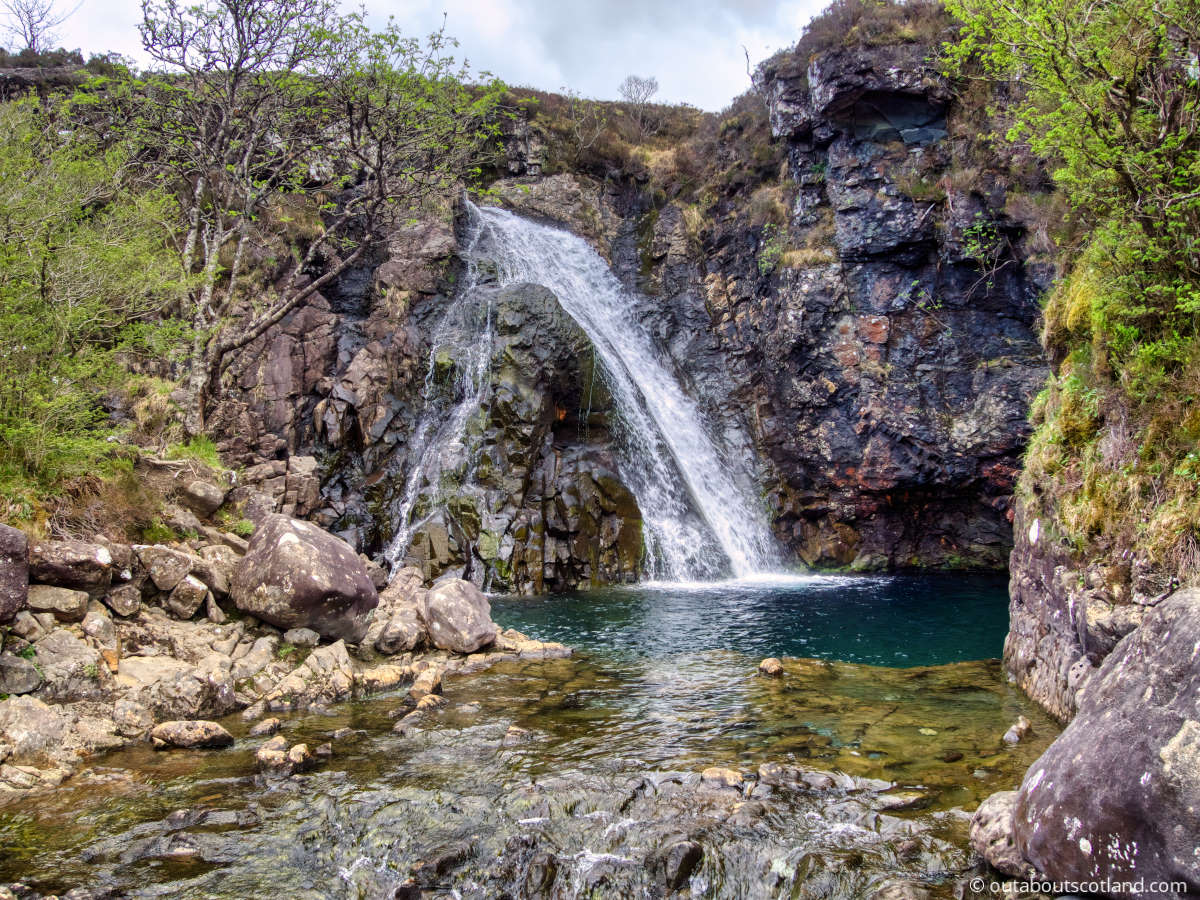
Out About Scotland Complete Guide to the Fairy Pools
The Fairy Pools are a series of waterfalls and pools of water located at the foot of the Black Cuillin mountains in the central region of Skye. There are two options for visiting them, the first of which is a 4-mile footpath near the Sligachan waterfalls off the A87, and the second is to drive directly to the pools via a minor road from the B8009 near the village of Carbost.
I personally recommend taking the walking route from Sligachan as it’s such a scenic area that it would be a shame to miss it, but on the other hand, it’s a tough walk for children, so families will be best off parking at the Fairy Pools instead.
A gravel path leads to the pools themselves and crosses a few burns before arriving at the first pool. The return trip is only 1.5 miles long. It’s not exactly an all-day adventure, but visitors should be entertained for a good hour or two.
The pools themselves are famous for their vibrant blue-green colour (at least when it’s sunny), which is caused by light reflecting off the underlying marble. With the backdrop of the Black Cuillins, the area is very atmospheric, and for that reason, it has become one of the main destinations for tour coaches, so it’s very busy all day long.
Hardy souls might like to take a dip in the freshwater pools, but be aware that the water hovers around a chilly 11 °C even in the height of summer, though I guess if you’re into wild swimming in Scotland, that’s positively balmy.
If you can fight your way through the crowds of tourists, you’ll get some good photos of the pools, after which you can continue onwards into the paths that thread their way into the surrounding Black Cuillins. Just be aware that these peaks are among the most treacherous in Scotland, so if you do decide to venture into them after visiting the Fairy Pools, make sure you pack plenty of warm clothing and take an OS map with you.
OS maps for the area are #411 Explorer and #32 Landranger.
Buy OS Explorer maps direct from Ordnance Survey.
Buy OS Landranger maps direct from Ordnance Survey.
The Marble Line
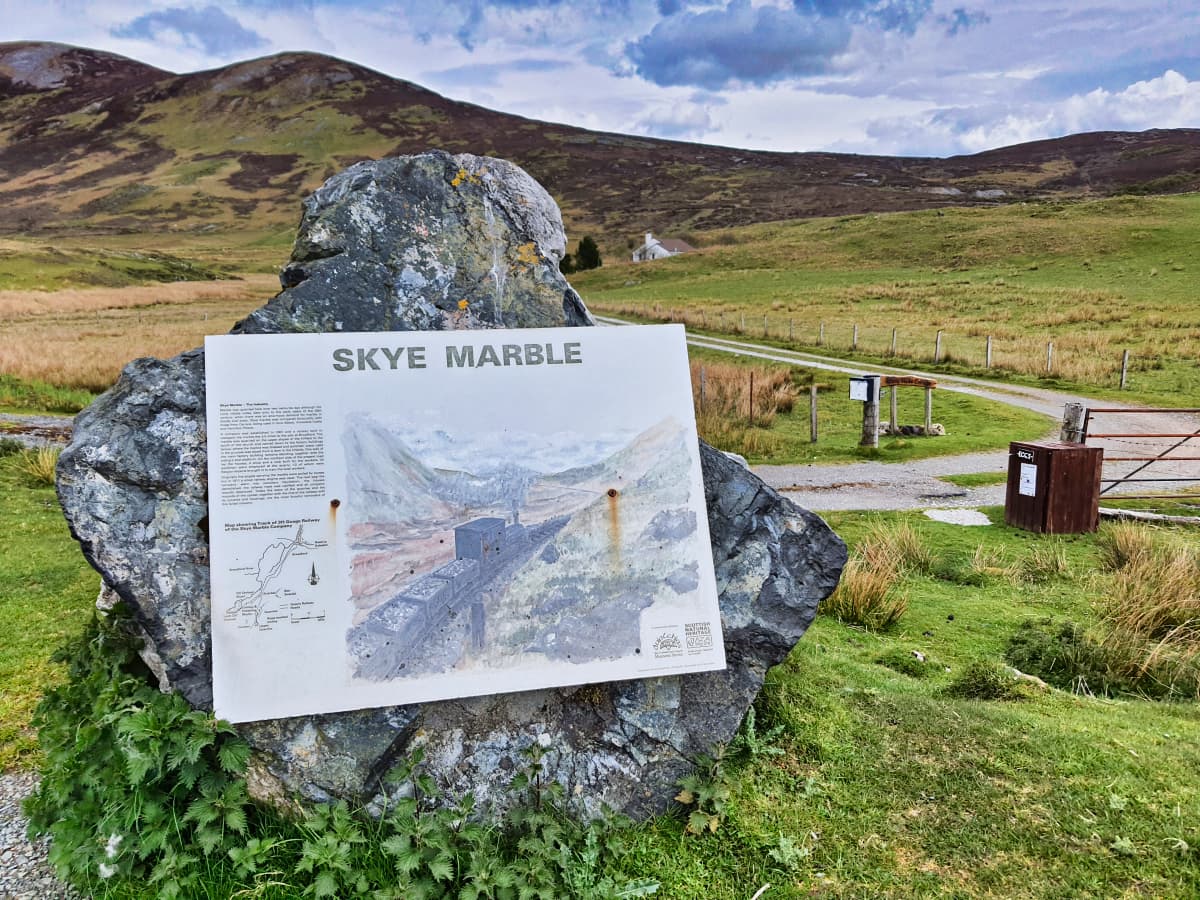
Out About Scotland Complete Guide to The Marble Line
The Marble Line is the remnant of a long-disused railway track in the southern region of Skye, immediately south of the village of Broadford. The line was once part of a major industry on the island at a time when marble was mined near the Red Cuillin mountains for sale across the globe, and the track was originally built to cope with the increasing output of the quarry.
The reason why Skye marble was so highly prized is that it’s the only seam of true marble in Britain, and it’s so rich in colour that it was used in the construction of the Vatican and was even used as jewellery. However, the company that built the track went bust shortly after the railway was finished, and it was abandoned for the next 100 years before being turned into a footpath as part of a community-run project.
Today, walking the Marble Line is a great way to see the Red Cuillin mountains as well as the Boreraig Clearance Village (mentioned earlier), and it’s easily one of the best things to do in Skye with a dog. The track is open to cyclists and walkers, but it’s quite a short route at 5 miles return, so it shouldn’t take much more than 3 hours to complete on foot.
Once at the quarry, you can either continue down the rocky track to Boreraig (not suitable for bikes), return along the same route, or (if on a bike) take a minor detour back onto the B8083 for a very enjoyable cycle around Loch Slapin.
The Old Man of Storr
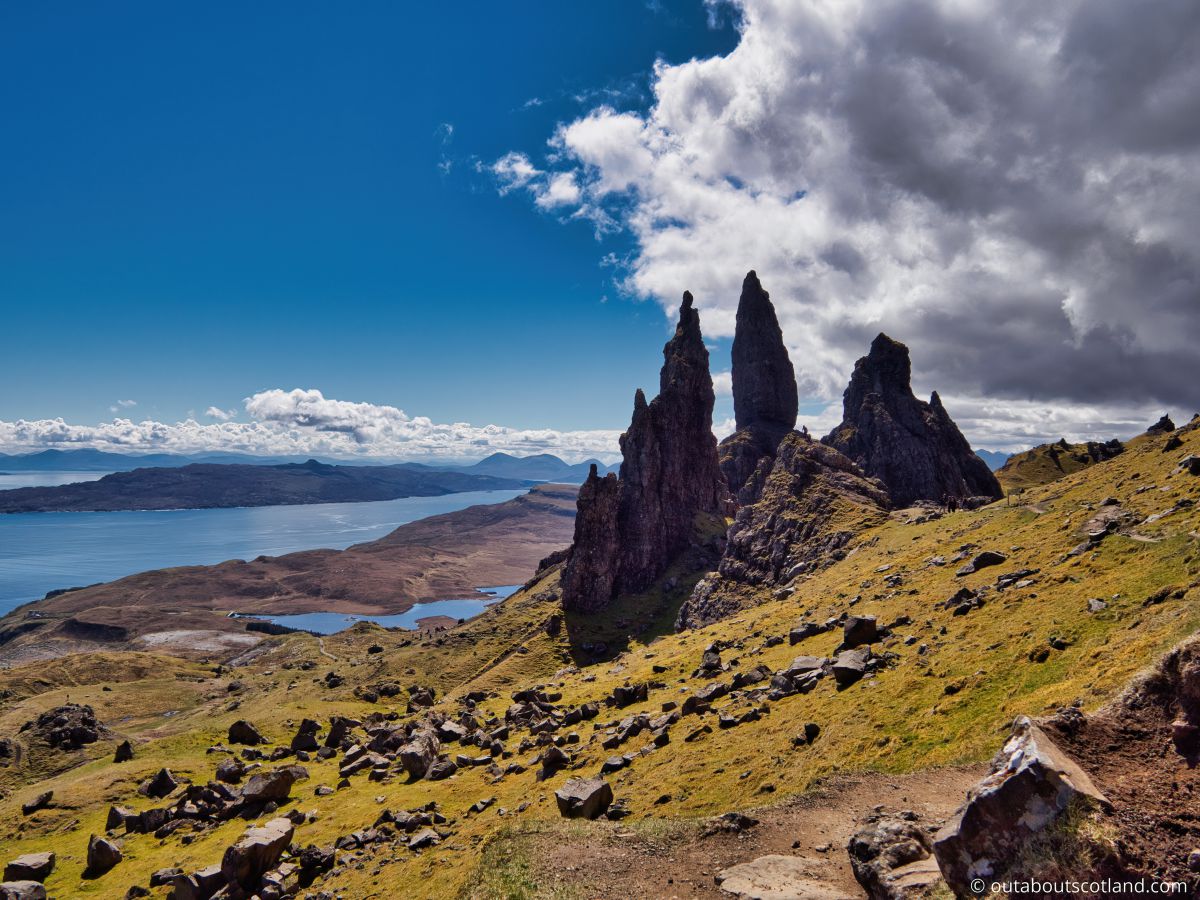
Out About Scotland Complete Guide to the Old Man of Storr
Alongside the fairy pools, the Old Man of Storr is one of the biggies when it comes to destinations for tour coaches. To be honest, that’s understandable for no other reason than its location, which is close to the A87 (Skye’s fastest road) and Portree (Skye’s largest settlement), meaning tour operators can easily ferry their passengers to the Storr before dropping them off for lunch in the village.
But regardless of the crowds that go there, the Old Man of Storr is one of the top sights on the Isle of Skye, and it would be a crime to miss it, even if you’re just hopping over to the island as a day tripper.
The Storr is a large rock outcrop six miles north of Portree that overlooks the Isles of Raasay, Rona, and the Applecross peninsula on the mainland. It’s a stunning location from sea level, but once you climb to the foot of the ‘Old Man’ (an elevation of 2,360 feet), the view becomes nothing short of jaw-dropping. In fact, and this is from someone who has travelled all over Scotland, I’d say it’s one of the best viewpoints in the country.
Just like the Quiraing, the bizarre land formations of the Storr are the result of ancient landslips and weather erosion that have left behind an otherworldly landscape that’s unlike anywhere else in Britain.
The view from the top of the Storr is a great reward for the effort involved in walking the 2-mile footpath from the lower car park, and as it’s such a tourist hotspot, the path is in very good condition, with a wide gravel section at the bottom and nothing more arduous than a grassy track towards the top.
Once up there, I suggest soaking up the glorious view for as long as possible before the next tour coach comes along, or you can walk a little further north into the rest of the Storr and onwards into the Maell na Suirmach nature reserve.
The Quiraing
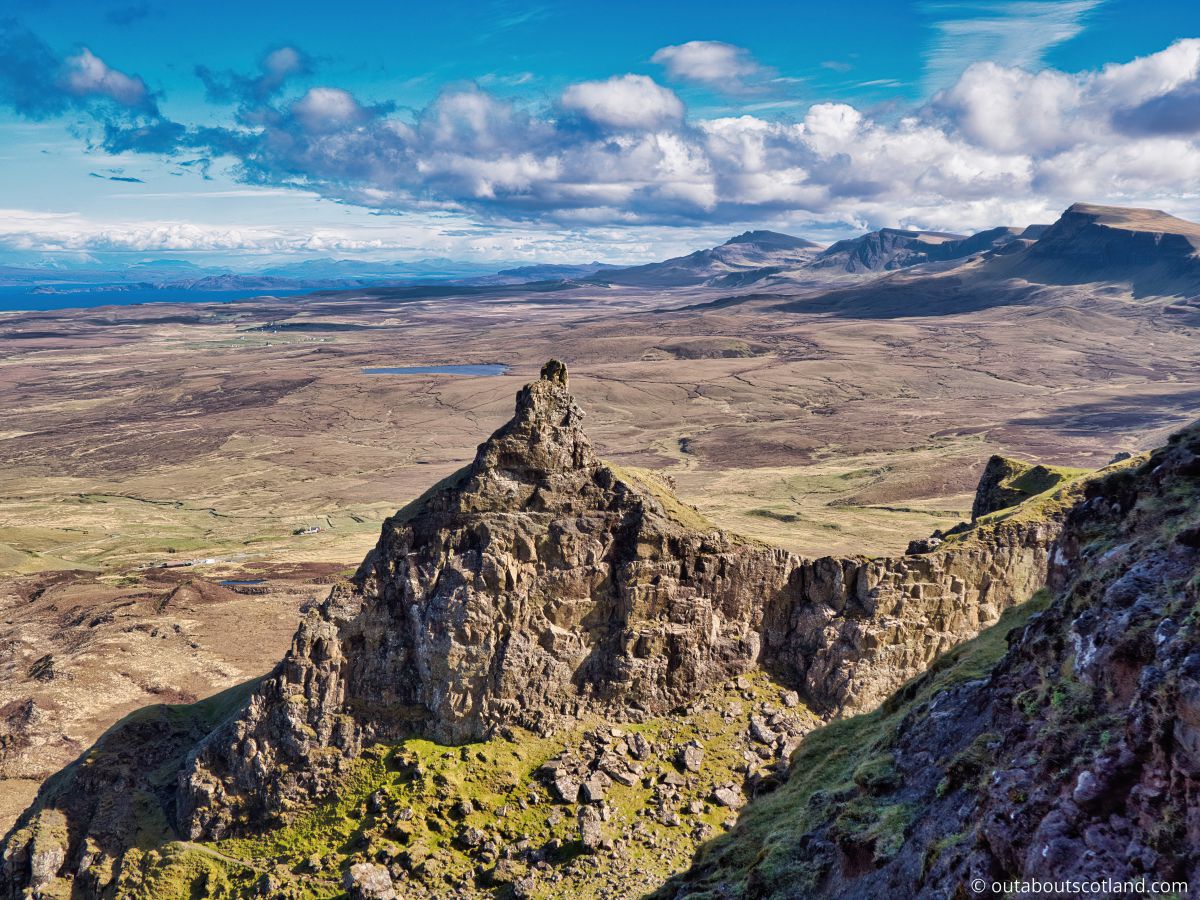
Out About Scotland Complete Guide to The Quiraing
The Quiraing is a section of the Trotternish Ridge in Skye’s north that, like the Storr, is the result of numerous historic landslides. What remains is a strangely deformed landscape with sheer-sided cliffs and lone spires of rock set in a barren wilderness that offers one of the most memorable walks you’re ever likely to experience.
Getting to Quiraing is a wee adventure in itself, as the single-track road leading to it is very steep and doubles back on itself a bit like a mini Bealach na Ba, so it’s important that visitors slow down as the road is easily congested, especially if camper vans are on the loose.
At the start of Quiraing, there’s a car park that often has a burger van (handy as there are no shops for miles around), opposite which is the footpath that heads into the depths of Trotternish.
It’s not a difficult walk by any means, and in fact, it’s almost level in places, though the track is narrow and gets very muddy in winter. There’s also quite a lot of shingle on the hillsides that gets washed down onto the track, so sturdy walking boots with good grips are essential.
Features to look out for are The Needle (a 120-foot rock pinnacle) and The Prison (a pyramid-shaped outcrop), as well as lochs Fada, Hasco, and Langaing. The majority of tourists tend to double back once they get midway, but I recommend pushing on to the end of the path, which presents stunning views across North Skye.
The entire return route is around 5 miles in length and should take around 4 hours to complete. There’s an excellent walking route description on the Walk Highlands website if you’d like to know more about walking the Quiraing.
Frequently Asked Questions
Why is the Isle of Skye famous?
The Isle of Skye is famous for its landscapes, which are widely regarded as the most beautiful in Scotland. Highlights include the Quiraing on the Trotternish Ridge as well as the Storr, the Fairy Glen, and the Fairy Pools.
Skye is also famous for its historic attractions, including Armadale Castle and Dunvegan Castle, and natural wonders like the Kilt Rock waterfall and the dinosaur footprints on An Corran beach.
Is the Isle of Skye a must?
The Isle of Skye is an absolute must for visitors on a tour of Scotland. Getting there is easy thanks to the Skye Bridge at Kyle of Lochalsh, and the island can be accessed from Edinburgh or Glasgow in just 4 hours.
Tourists have a wide choice of attractions to visit, and there are lots of activities to take part in, including hill walking in the Cuillin mountains, coastal walks, exploring castles, and visiting nearby Raasay.
How long does it take to drive around the Isle of Skye?
It will take around 3 hours to drive the A87 from the Skye Bridge to Sligachan, then to Portree and around the Trotternish Peninsula.
Driving the A851 along the Sleat peninsula takes one hour from the Skye Bridge, and driving from the bridge to Glendale on the north-west of the island takes 2 hours.
Is the Isle of Skye touristy?
The Isle of Skye is very touristy, and in fact, it’s one of the busiest places in Scotland, especially in the summer. Each year, more than 600,000 tourists visit Skye, and some attractions like the Fairy Pools have to cope with upwards of 200,000 visitors annually.


